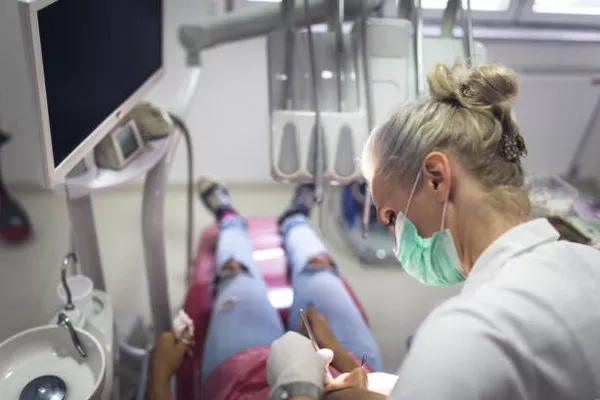When considering dental implants as a solution for missing teeth, understanding the associated costs is crucial. Screw-in dental implants offer a permanent and natural-looking solution for tooth replacement, but the price can vary depending on several factors. Here’s a comprehensive guide to help you navigate the cost of screw-in dental implants, including average prices, cost breakdowns, additional expenses, insurance coverage, long-term value, procedure details, choosing a provider, and alternative options.
Average Cost
The average cost of a single screw-in dental implant typically ranges from $3,000 to $4,500. However, it’s essential to note that this is an average, and prices can vary widely depending on factors such as location, the expertise of the dental provider, and the complexity of the case.
Cost Breakdown
The cost of a screw-in dental implant typically includes several components:
Implant Body: This refers to the metal screw that is surgically placed into the jawbone to serve as a replacement for the tooth root.
Abutment: The abutment is the connector piece that attaches to the implant body and provides support for the crown.
Crown: The crown is the visible part of the implant that looks like a natural tooth and is custom-made to match the color, shape, and size of the surrounding teeth.
Each of these components contributes to the overall cost of the dental implant procedure.
Additional Expenses
In addition to the core components of the implant, patients may incur additional expenses, including:
Bone Grafting: Patients with insufficient jawbone density may require bone grafting procedures to ensure the successful placement of the implant.
Initial Consultation: The initial consultation with the dental provider may involve diagnostic tests, such as X-rays or CT scans, to assess the patient’s oral health and treatment needs.
Imaging: Advanced imaging techniques, such as 3D cone beam CT scans, may be necessary for precise treatment planning and implant placement.
Follow-Up Appointments: Patients may need to attend follow-up appointments to monitor the healing process and ensure the long-term success of the implant.
These additional expenses should be factored into the overall cost of the dental implant procedure.
Insurance and Financing
While dental insurance may provide coverage for certain aspects of the implant procedure, such as consultations or diagnostic tests, coverage for the implants themselves may be limited. Some insurance plans offer partial reimbursement for implant-related expenses, but patients should check their policy carefully to understand the extent of coverage.
For those concerned about the upfront cost of dental implants, financing options may be available to help offset expenses. Many dental clinics offer in-house financing or partner with third-party financing companies to provide flexible payment plans for patients.
see also: Can I brush my teeth after dental implant?
Long-Term Value
When considering the cost of dental implants, it’s essential to evaluate their long-term value compared to alternative tooth replacement options. Screw-in dental implants offer several benefits, including:
Durability: Dental implants are designed to last a lifetime with proper care, making them a cost-effective long-term solution.
Natural Appearance: Implants look and feel like natural teeth, enhancing the patient’s smile and self-confidence.
Improved Oral Health: Implants help preserve jawbone density and prevent bone loss, promoting overall oral health.
While the initial cost of implants may be higher than alternative options such as bridges or dentures, their durability and long-term benefits often result in cost savings over time.
Procedure Details
The dental implant procedure typically involves several stages:
Consultation: The dental provider evaluates the patient’s oral health and treatment goals to determine their suitability for implants.
Implant Placement: The implant body is surgically placed into the jawbone, where it integrates with the surrounding bone tissue through a process called osseointegration.
Healing Period: Patients undergo a healing period, during which the implant fuses with the jawbone and heals properly.
Abutment Placement: Once the implant has healed, an abutment is attached to the implant to provide support for the crown.
Crown Placement: Finally, a custom-made crown is placed onto the abutment, completing the restoration process.
The duration of the procedure and the healing time can vary depending on individual factors and the complexity of the case.
Choosing a Provider
Selecting a reputable and experienced dental provider is crucial for the success of the implant procedure. When choosing a provider, consider the following factors:
Experience: Look for a provider with extensive experience in implant dentistry and a proven track record of successful implant placements.
Credentials: Verify that the provider is licensed and board-certified in implant dentistry, indicating their expertise and qualifications.
Patient Satisfaction: Read patient testimonials and reviews to gauge the provider’s reputation for quality care and patient satisfaction.
By prioritizing these factors, patients can ensure a positive experience and optimal results from their dental implant procedure.
see also: Can titanium dental implants be removed?
Alternatives
While screw-in dental implants offer numerous benefits, they may not be suitable for everyone. Alternative tooth replacement options, such as bridges or dentures, may be more appropriate for some patients. When comparing implants with alternative options, consider factors such as cost, maintenance requirements, and longevity.
Despite their higher upfront cost, dental implants often provide superior long-term value and quality of life compared to alternative solutions.
Conclusion
Understanding the cost, components, additional expenses, insurance coverage, long-term value, procedure details, provider selection, and alternative options related to screw-in dental implants is essential for individuals considering this tooth replacement option. By carefully evaluating these factors and working with experienced dental professionals, patients can achieve a beautiful and functional smile that enhances their overall quality of life.
You Might Be Interested In






























